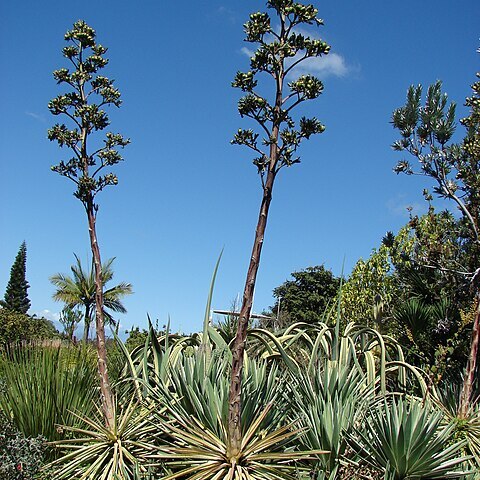A small leafy agave. It grows 60-300 cm high. It can form suckers. The leaves are sword shaped and fibrous. They can be flat or have a gutter. There are small hooked teeth along the edge. It flowers are maturity. The flowers are trumpet shaped and greenish-yellow. The flowering stalk can be 5 m long. The bracts are purple and triangle shaped.



